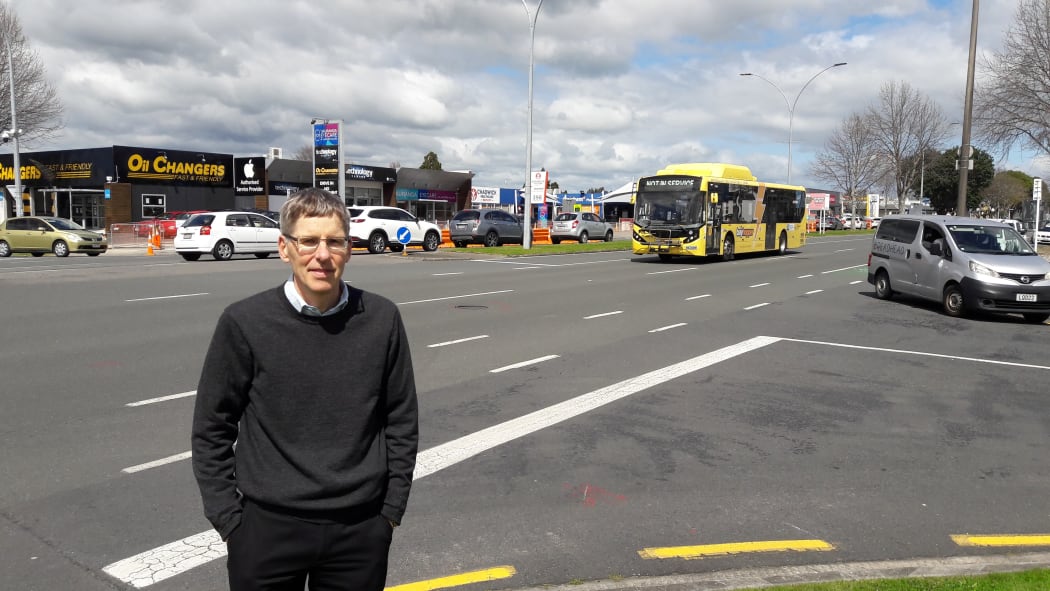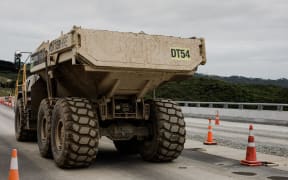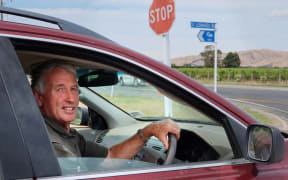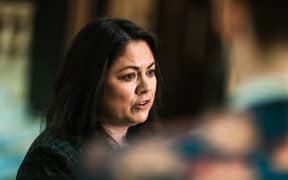Hugely significant; hugely costly; hugely wrong. They are all ways being used to describe the largest overhaul of the main street heading into the centre of Tauranga.

Glen Crowther of Sustainable BOP trust, standing on Cameron Rd, the main drag through Tauranga. Photo: Supplied
Construction began this week on the Cameron Road upgrade, with the budget already topping $70m.
That's a new-highway-level of cost for 3km of part-time bus and cycle lanes, and footpaths, and roadway that - controversially - retains four lanes for cars.
Nine community groups have joined forces to try to stop it.
They accuse the city council of pushing through a half-baked design that will only add to vehicle emissions, contrary to government goals.
Even two of the three partners in the upgrade recently said, behind closed doors, that the design would not work or would actually "undermine" public transport - but then both signed up to carry on.
One of them, the Transport Agency Waka Kotahi, in May, told the Tauranga City Council the upgrade would not achieve the desired outcomes and it should take a breather, according to documents.
However, Waka Kotahi later said it backs the upgrade.
"The current design provides an improvement in public transport and walking and cycling access, which takes into account that the full benefits of the project will arise when the further stages of the project, all the way down Cameron Road and through to Tauriko, are completed," it said.
A second partner, the Bay of Plenty Regional Council, that runs the buses, went further, telling the city council in June the project "profoundly undermines" getting more people to use public transport.
The project's First Stage had won $45m from the government's Crown Infrastructure Partners (CIP) last year, in the push for shovel-ready infrastructure projects to buffer against Covid.
"We are very surprised that CIP appears to accept a project that does not appear to deliver any benefits'' for a shift to public transport, the regional council told the city council in June.
Anne Tolley who leads the city council, acknowledges this is a fundamental concern.
"Yes, of course it is, because they have the primary responsibility for public transport," Tolley told RNZ.
"Tauranga City Council, on the other hand, has to match that with the fact that we have four lanes of traffic now that come to a standstill at peak hours.
"To take one of those lanes out for a dedicated bus lane immediately wasn't in the original agreement that was signed with the Crown. We're working to that over the next 10 years."
The community groups, led by Sustainable BOP Trust's Glen Crowther, have written to the Transport Minister calling on him to back an independent review.
"Eighty-five percent of the benefits ... need to come from the public transport system ... and the people who run the public transport system are saying that this project will not lead to good outcomes," Crowther said.
"What we need to do is change the design to make sure the buses actually run faster up and down the road rather than slower.
"Change the design so you won't have 14 sets of traffic lights."
Minister Wood has asked officials for more information but added the bar for a review is "very high".
The city council says community support is paramount, but rejected a review - "No, we're not going to stop ... it's a hugely significant project," Tolley said.
After "intense discussions", all three partners were on board, she said.
The regional council's enthusiasm sounds muted: "The key issue from a public transport and safety perspective is that [the city council] will not revisit its decision on retaining two general traffic lanes," it said in a statement.
"This is a decision of TCC council and now all parties are to work within this decision."
The upgrade aims to cut car numbers on the road by 10,000 day - a huge reduction from the 24,000 now.
Buses will run where cars park in lanes that for the first 10 years (or until certain trigger points are reached) are bus-only for six hours a day.
The Grace Road and Avenues Neighbourhood Residents' Association spokesperson Phil Green says the design is "nonsense".
"It doesn't actually seem to get people out of cars at all."
He's also sceptical of the council's track record.
As well as the four Commissioners - including Tolley - being imposed on it by government, the council recently had to overhaul its project planning after multi-million dollar fiascoes at the Bella Vista housing project and Harington St car park building.
The upgrade's stage two is meant to deliver the biggest public transport benefits, but remains a mystery to Green.
"The council are very loathe to show us a finished plan," he said.
Tolley said her council had to cater for an expected influx of 30,000 people on the central peninsula, and encouraging public transport could only achieve so much.
"If we're really good at getting people out of cars, and into buses, we might see a 10 percent change.
"But the population is growing rapidly, too. So you know, we're up against it. And there are competing priorities."
Tauranga people only make 2 percent of trips by public transport.
In addition to Crown funding, ratepayers are putting in about $13m - so far.
Crowther said that the current total cost of $72 million equates to roughly $1300 per household, and the cost-benefit ratio was negative and falling.
The upgrade adds to the years of roadworks locals have faced, such as at another hugely expensive, very short (2km) upgrade, of SH2 from Baypark to Bayfair.
Crown Infrastructure Partners says its governance is robust, as outlined in confidential funding agreements.
Regional councillors contacted by RNZ declined to comment.





